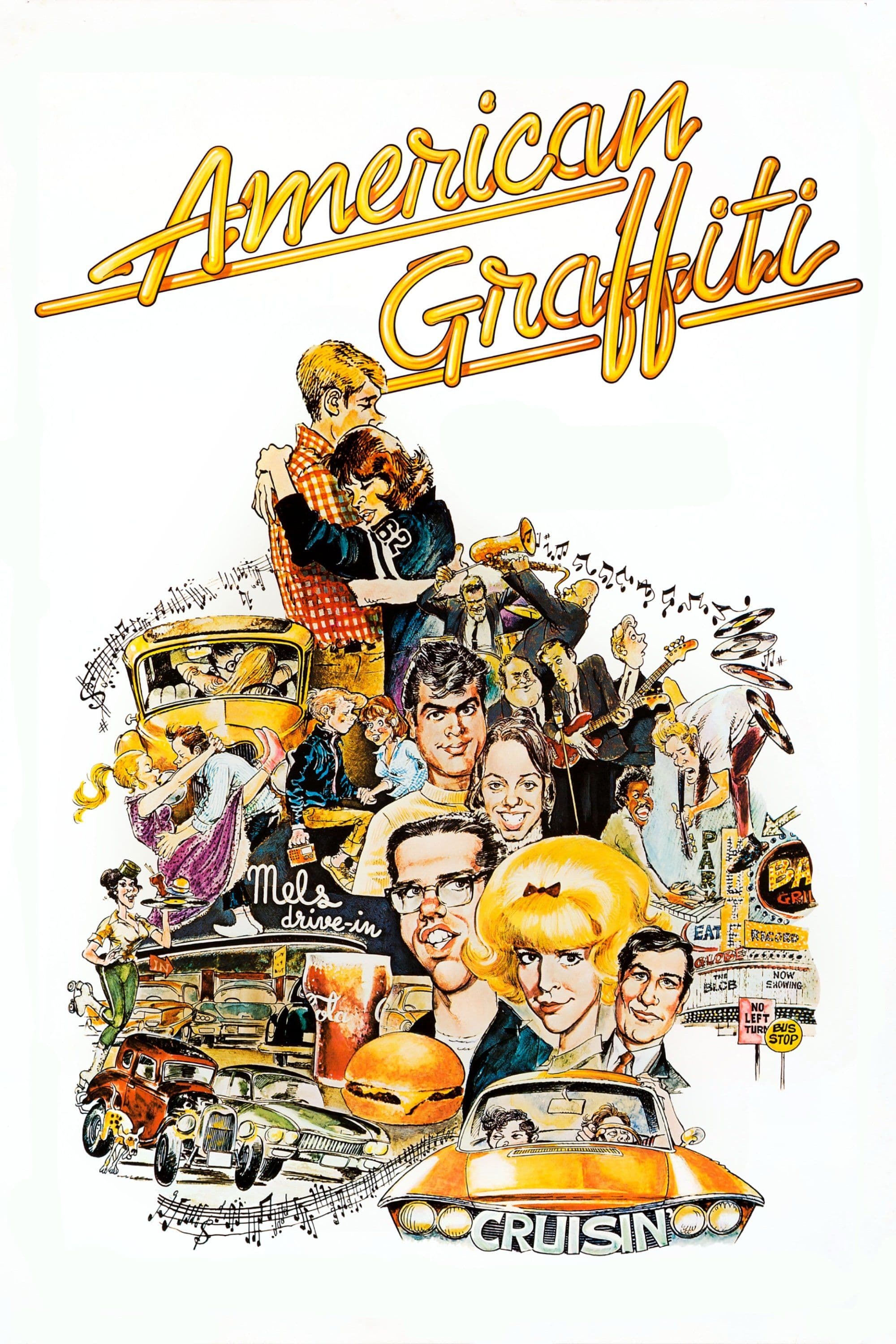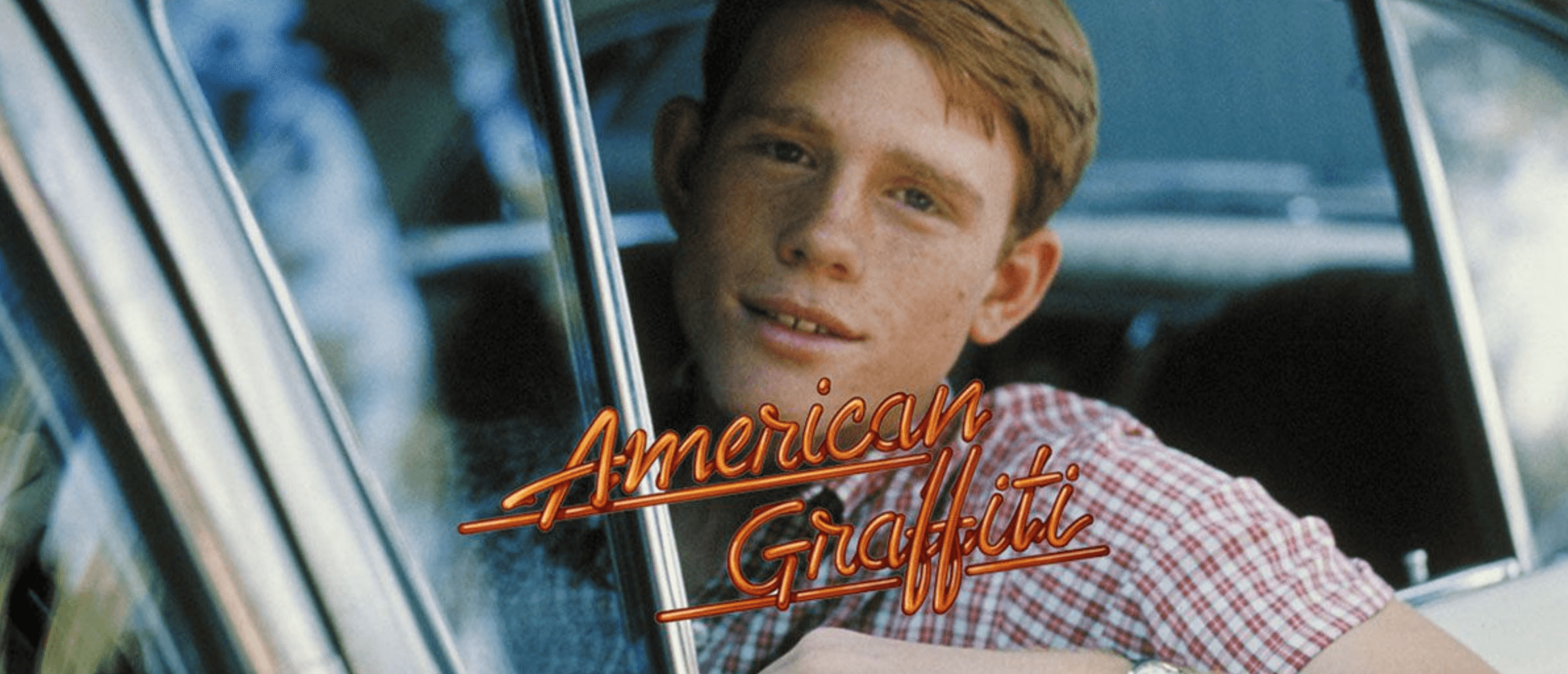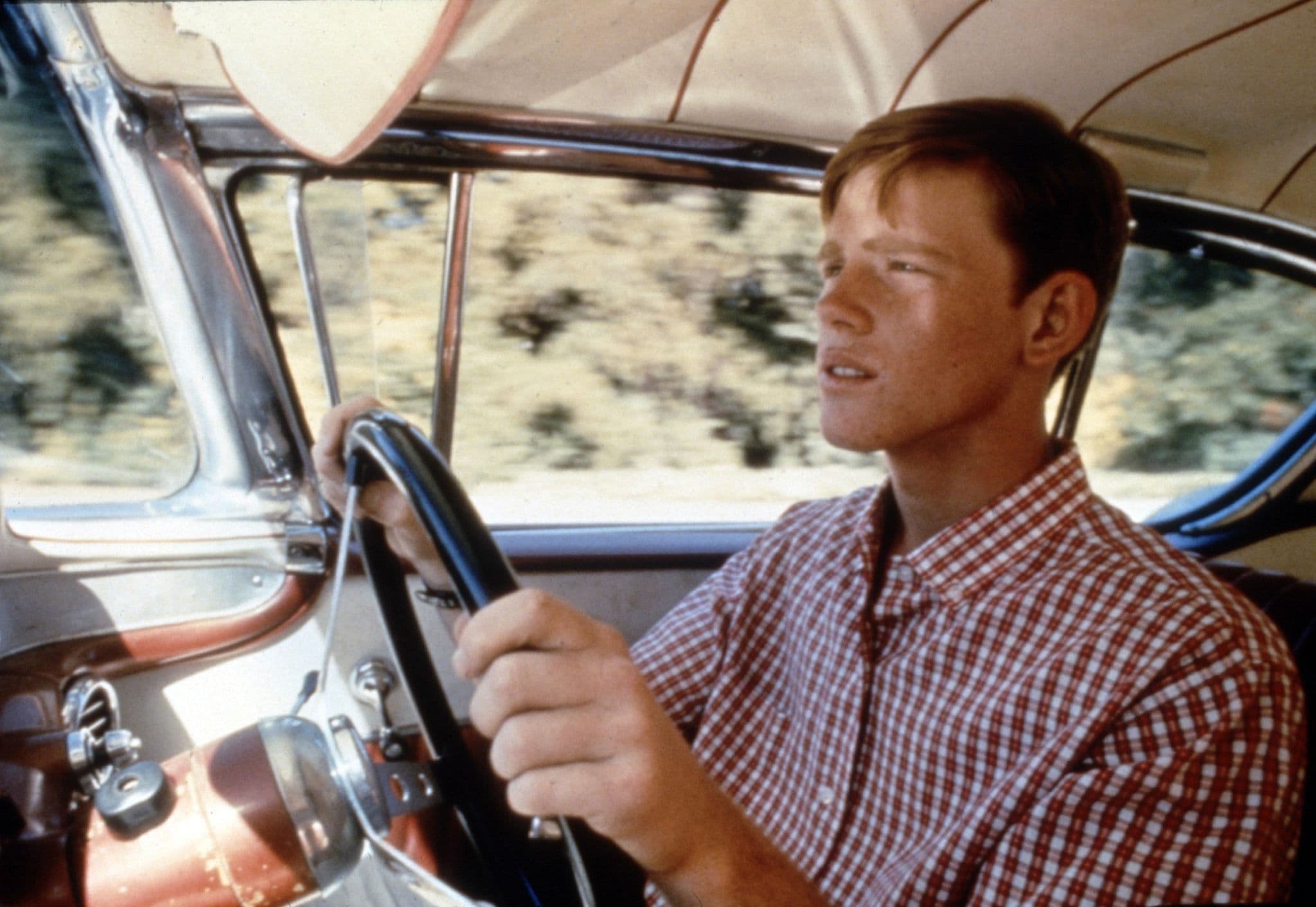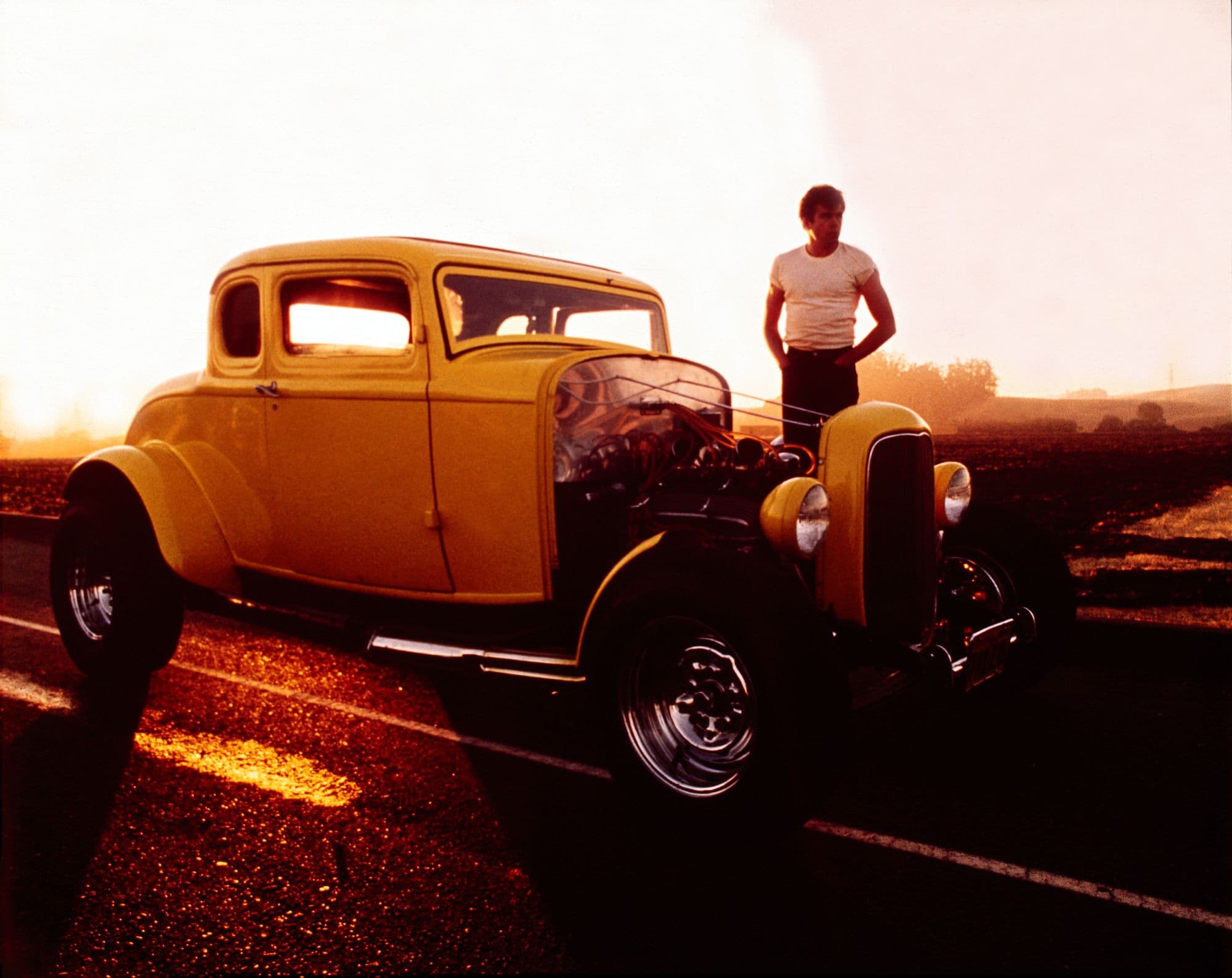
American Graffiti
1973
Rate this movie
Average: 0.00 / 5
(0 votes)
Director
An evocative work with a deep nostalgic aftertaste, this Lucas film conceals all the insecurity of new generations regarding an often undecipherable reality, hidden like a remote arcane behind a curtain of things and people. It is not simply a dive into the past, but an investigation into the inherent melancholy of the transition from youthful optimism to the uncertainty of the future. Lucas’s nostalgia is not sugar-coated; it is conscious, tinged with a lucidity that knows what is about to be lost, or perhaps, what was never fully possessed. A palpable feeling, almost a muffled lament, emerges from the rock’n’roll sounds of an era destined to evaporate, leaving behind only the echo of broken promises.
American Graffiti is not so much a “how we were” but a “how we could have been.” This distinction is crucial and elevates its scope far beyond a mere generational portrait. The film almost configures itself as a minor epic, a mythopoeic evocation of an adolescence at the crossroads between post-war innocence and the imminent cultural and political cataclysm. It does not show us a documentary reality, but an almost dreamlike, idealized image of an America on the brink of radical transformation, before the sirens of Vietnam and social disillusionments tore through its veil. It is a tribute to an atmosphere, rather than to specific events, a vivid fresco of shared dreams and fears.
Summer 1962: everything happens in one night. This almost classical unity of time is not a casual narrative device, but a profound stylistic choice that concentrates the energy, tensions, and revelations. That single night becomes a microcosm, a confined stage where the anxieties of American youth manifest with an almost feverish intensity. It is the night of the end, or perhaps the beginning, a final, frantic dance before the daylight reveals the necessity of definitive and irreversible choices. 1962, moreover, is not just any year; it is the eve. Before Kennedy’s assassination, before the full escalation of Vietnam, before the counterculture redefined the social landscape. The film captures that brief, precious instant of suspension before the plunge into the abyss of maturity and history.
Many stories intersect within the same span of time, each forming a mysterious piece of an unfinished quest. The narrative tapestry is a choral ballet of automobiles, neon lights, and radios tuned to the same frequencies, binding individual destinies into a collective design. Every encounter is a potential crossroads, every dialogue a reflection on the unknown that awaits. It is a "quête" without a Grail, where the destination is not a tangible object, but the understanding of oneself and one's place in a world that seems to be accelerating. The road itself, with its infinite possibilities and dead ends, becomes a metaphor for this endless exploration.
Every character seems to struggle to find their own balance, their rightful place within the narrative, but especially within their own lives. Curt Henderson, a budding intellectual, is torn between the unknown of university and the reassuring familiarity of small-town life; Steve Bolander, the model boyfriend, faces the crisis of his first true commitment; John Milner, the undisputed king of drag racing, is a prisoner of his role as a local icon, in a world that is about to outgrow him; and Terry "The Toad" Fields, the quintessential geek, desperately tries to assert his masculinity and be noticed. They are archetypes, certainly, but rendered with a vulnerability that makes them painfully human and recognizable.
Lucas’s gaze will focus on four characters in particular, and in a sudden temporal leap, he will allow us to know their future and their mature ideals in stark contrast with the present. This epilogue is the film’s true gut punch, a stroke of genius that transforms a nostalgic comedy into a deeply melancholic and almost fatalistic elegy. Lucas does not offer a happy ending, but a raw reality, a brutal confrontation between the dreams cherished on that long summer night and the stark materialization of fate. The illusion of an undefined and malleable future clashes with its inexorable concreteness.
One of them will die in a car accident, one will fight in Vietnam, one will become an insurance salesman, another a writer. These few, lapidary final sentences are the true key to interpretation, the tragic counterpoint to the apparent lightness. John Milner's death on the road is a violent farewell to the era of carefree cruising; Steve’s departure for Vietnam announces the end of collective innocence and the beginning of a season of national traumas; Terry’s "future as an insurance salesman" is the quintessence of bourgeois mediocrity and resignation, a bitter fall from any youthful aspiration; and only Curt, the writer, seems to find a kind of redemption in the ability to narrate and perhaps process that lost season.
An aura of defeat hovers over all four characters, as if their future could somehow influence their actions during that night and preordain their deeds. It is not a personal defeat in the conventional sense, but rather a tragic inevitability, a commentary on the great, illusory "American Dream" which, in those years, began to show its first cracks. The film suggests that, at times, life is not an an open road but a predetermined track, and that youthful freedom is only a transient illusion. This fatalism imbues the film with an almost tragic depth, transforming it from a simple work of entertainment into an analysis of the human condition and the weight of choices – or their absence – on individual destiny.
Poignant, ironic, and melancholic, Lucas’s film opened a season of revision in American cinema, a pause for reflection to try and understand what remained of what was perceived from the outside as “the American Dream.” Along with works like The Godfather and Gangster Story, American Graffiti positioned itself within the "New Hollywood" trend, but with a surprisingly commercial interpretation for the time, which guaranteed its unexpected success, while preserving its authorial integrity. Its influence was enormous, not only in defining the "coming-of-age" genre but also in demonstrating that nostalgia, if treated with intelligence and acute psychological observation, could resonate deeply with audiences. It became a model for subsequent films, from Porky's to Richard Linklater's Dazed and Confused, while far surpassing the former in terms of thematic complexity and emotional depth, remaining a timeless masterpiece, a lyrical snapshot of an America that was learning to come to terms with its own vulnerability and limitations.
Country
Gallery





Featured Videos
Official Trailer
Comments
Loading comments...